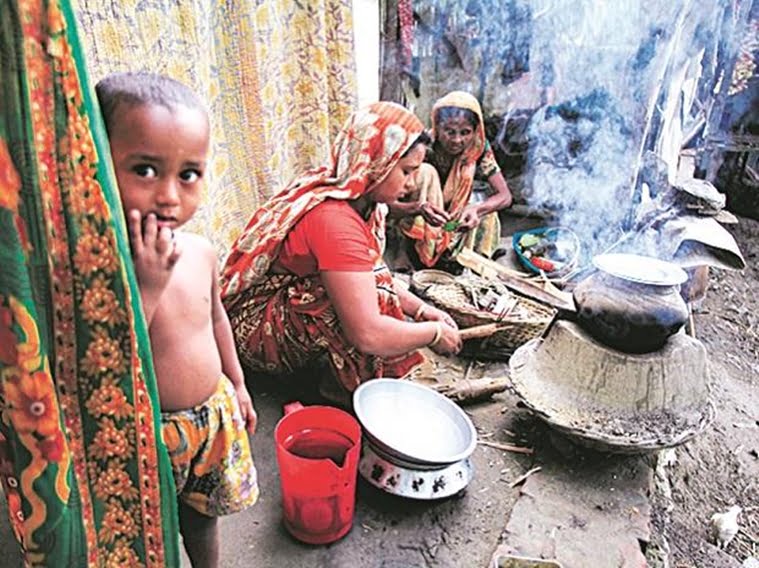The institution of family and the conventional understanding of the same has been conveniently romanticised and glorified in a heteronormative societal setup, without delving into what it entails for the individuals within it. Nivedita Menon, in her book, Seeing Like A Feminist, provides us with an understanding of the institution of family when she says “‘Family’ is an institution with a legal identity, and the state recognises as a family, only a specific set of people related in a specific way” which excludes, a group of friends, a homosexual couple with adopted children, unmarried mothers, women living with their siblings, etc. In other words, a ‘family’ is discriminatory in the sense that it can only be founded in patriarchy and heterosexual structures: a man, his wife, and ‘his’ children. This contemporary informal understanding resonates the purpose of the origination of family as Engels, writes in his book, “The Origin of the Family, Private Property and the State” – “The original meaning of the word family (familia) is not that compound of sentimentality and domestic strife which forms the ideal of the present day philistine; among the Romans, it did not at first, ever refer to the married pair and their children, but only to slaves” (Engels, 1884).
This aspect of family as rooted in a sexual division of labour is what this essay attempts to unravel, from a Marxist-feminist perspective.
While keeping the original meaning of family and its conventional informal understanding in mind, it is easy to recognise and locate the positioning of the male and the female sex in the hierarchical institution of the family. Consequently, Menon characterises family as an institution based on inequality and clearly-established hierarchies of gender and age, with gender trumping age which further functions to perpetuate inequalities through private property lineage i.e. patrilineality. The basis for this inequality and hierarchy in the family is the production relations and the sexual division of labour practised in the family setting. The patriarchal family follows a strict sexual division of labour at home. Menon argues that the sexual division of labour is one of the key features of the institution of the family. Women are responsible for housework – that is, for the reproduction of labour-power. She defines that labour-power as the labour that goes into making people capable of working day after day (food, clean homes, clean clothes, rest) is provided by women.
The sexual division of labour is not just a technique to divide work but further, it conceals the fact that men’s work is considered human while women’s work is perceived as determined by their ‘nature’.
The sexual division of labour is not just a technique to divide work but further, it conceals the fact that men’s work is considered human while women’s work is perceived as determined by their ‘nature’. The sexual division of labour at home does not only specify what work will be done by whom in a family, but additionally, has larger implications. The sexual division of labour at home is instrumental in women’s labour-power and it has been argued by well-known feminist, Heidi Hartmann that “the material base upon which patriarchy rests lies most fundamentally in men’s control over women’s labour-power“. Hence, the sexual division of labour at home is the material base of patriarchy. Men wield control over women’s labour-power by confining them to the domestic realm and assigning them the toil of reproductive labour.
Maria Mies, another well-known feminist, writes in her book, “The Lace Makers of Narsapur”, that “the sexual division of work is structured in such a way that men not only control certain means of production but also means of their reproduction” through domestic reproductive labour. Housework then is part of a feudal mode of production wherein there entails the notion of unfreedom for women. The sexual division of labour at home serves the interest of the male sex, as Christine Delphy argues that “husband’s only obligation, which is obviously in his own interest, is to provide for his wife’s basic needs or to maintain his labour-power”. Reproductive labour, including child-rearing performed by women is considered subordinate and does not receive the recognition it deserves. As we have observed, it is not even regarded as labour but work which women supposedly do out of love. Nivedita Menon’s poignant observations about this classification of women’s labour as “done out of love” comes across in her seminal work “Seeing Like A Feminist”.
The notion of considering the sexual division of labour at home as something ‘natural’ is not just restricted to the common person, but, in fact, even travels into the minds of celebrated philosophers like Karl Marx.
Another important aspect of the sexual division of labour is that it is considered ‘natural’. The notion of considering the sexual division of labour at home as something ‘natural’ is not just restricted to the common person, but, in fact, even travels into the minds of celebrated philosophers like Karl Marx. To quote Marx: “The distribution of work within the family, and the regulation of labour-time of the several members, depend upon differences of age and sex and upon natural conditions varying with seasons.” (Marx, 1964).
Also read: Unpaid Domestic Labour And The Invisibilisation Of Women’s Work
Marx did not recognise the sexual division of labour at home and further ignored women’s reproductive labour i.e. domestic work. While discussing use and exchange values, Marx argues that the labour behind creating use-values (commodities that serves a useful purpose) cannot be termed as social labour. In other words, women’s reproductive labour which is fundamental in creating use-values of labour and resources outside the domestic is not seen as worthy. Marx, denies the production of use-values, as a result of labour performed by women in the home and which is essential to maintain the strength of waged workers (men), has a social character.

Marx did not recognise how reproductive labour serves capitalism. Marx ignores women’s reproductive labour and has a patriarchal bias while explaining the notion of labour-power as, to quote Marx from “Wages, Price and Profit”: “Like that of every other commodity, its value is determined by the quantity of labour necessary to produce it. The labouring power of a man exists only in his living individuality. A certain mass of necessaries must be consumed by a man to grow up and maintain his life. But the man, like the machine, will wear out, and must be replaced by another man. Besides the mass of necessaries required for his own maintenance, he wants another amount of necessaries to bring up a certain quota of children that are to replace him on the labour market and to perpetuate the race of labourers. Moreover, to develop his labouring power and acquire a given skill, another amount of values must be spent” (Marx, 1973).
Also read: Coronavirus And The Unpaid Labour Of Women
Marx fails to understand that the money wage earned by men can only buy raw materials. Women’s unpaid and unrecognised reproductive labour is required to transform these into final goods.
What Marx is arguing here is, that, buying necessaries is labour-power. He fails to consider that labour-power does not only include buying necessaries but transforming raw materials to final consumable goods. Unpaid domestic labour in the household is necessary to transform the proceeds of paid labour into family well-being. Marx fails to understand that the money wage earned by men can only buy raw materials. Women’s unpaid and unrecognised reproductive labour is required to transform these into final goods. Money wage can buy flour but it requires women’s reproductive labour to transform the flour into the round rotis that Indian men need to be fed with. In other words, men prefer to buy food in raw form because reproductive labour is unpaid and unrecognised and is entirely provided by women.
The biggest implication of sexual division of labour at home is that it weakens labour market opportunities for women. The influx of women into the labour market will not only increase the abysmally low female labour force participation rate in India which is 17.5 percent (PLFS 2017-2018) but will increase the bargaining power of women at home.
Sarthak Mehra is a postgraduate in Development Studies from Ambedkar University, Delhi (2018-2020) and is excited to build a career in the development sector. He can be found on Twitter, Facebook and LinkedIn.
Feautured Image Source: Pinterest




